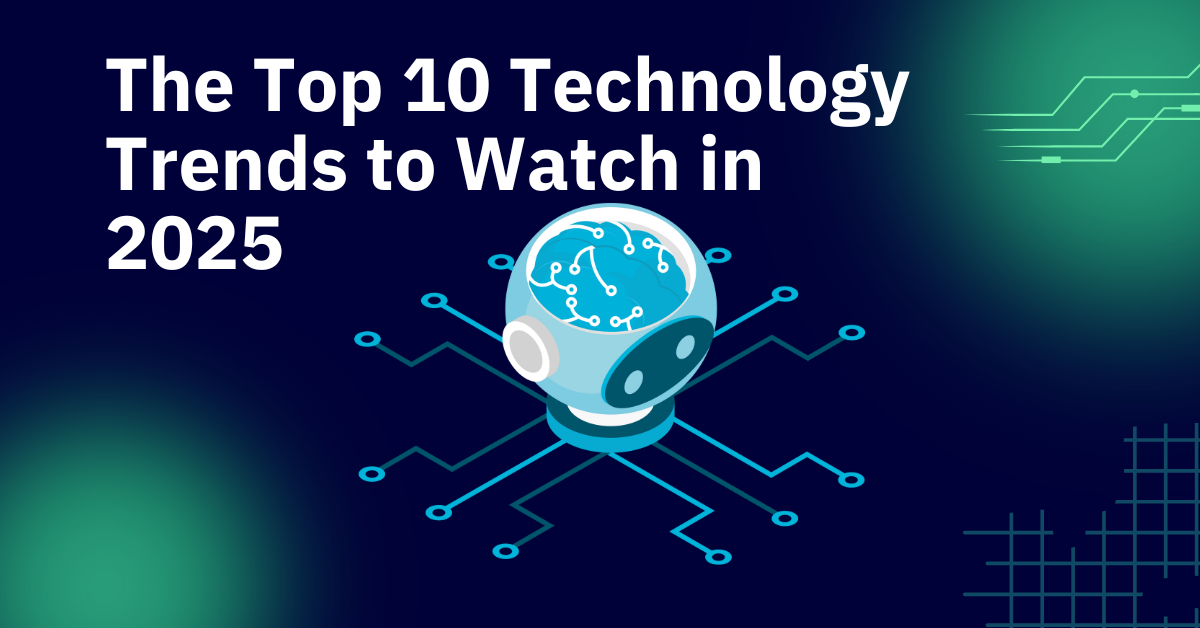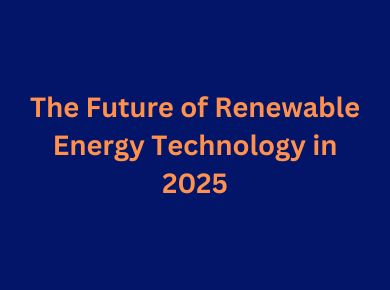As we navigate through 2024, the technological landscape continues to evolve at a breakneck pace, introducing innovations that are transforming industries, enhancing consumer experiences, and reshaping the way we interact with the world. Staying abreast of these trends is essential for businesses aiming to maintain a competitive edge and for individuals looking to harness the latest advancements. Here are the Top 10 Technology Trends to Watch in 2024:
1. Generative AI Evolution
What’s New?
Generative Artificial Intelligence (AI) has made significant strides beyond its initial capabilities of text and image generation. In 2024, Generative AI is now a cornerstone in diverse fields such as software development, pharmaceutical research, and personalized content creation.
Key Impact
- Accelerated Innovation: AI-driven code creation tools are streamlining software development, reducing time-to-market for new applications.
- Healthcare Advancements: In drug discovery, Generative AI is identifying potential compounds at unprecedented speeds, accelerating the development of life-saving medications.
- Personalization: Content personalization has reached new heights, with AI crafting tailored experiences for users in marketing, entertainment, and education.
Real-World Example
OpenAI’s latest models are being integrated into platforms like GitHub Copilot, enhancing developers’ productivity by suggesting code snippets and debugging solutions in real-time.
2. Quantum Computing Progress
What’s New?
Quantum computing has moved from theoretical research to practical applications, with significant advancements in quantum algorithms and hardware. Companies are investing heavily in quantum technologies to solve complex problems that are currently beyond the reach of classical computers.
Key Impact
- Financial Modeling: Quantum algorithms are optimizing portfolio management and risk assessment, offering unprecedented precision in financial services.
- Cryptography: Quantum-resistant cryptographic methods are being developed to safeguard data against the potential threats posed by quantum decryption.
- Material Science: Quantum simulations are enabling the discovery of new materials with unique properties, revolutionizing industries like aerospace and electronics.
Real-World Example
IBM’s Quantum Experience platform has expanded its quantum processing units (QPUs), allowing researchers to experiment with more complex algorithms and applications in real-world scenarios.
3. Green Technologies and Sustainable IT
What’s New?
Sustainability remains a critical focus, with green technologies making significant inroads into IT infrastructure. Energy-efficient data centers, carbon-aware computing, and circular economy initiatives are at the forefront of this movement.
Key Impact
- Cost Reduction: Energy-efficient solutions are lowering operational costs for businesses by reducing energy consumption.
- Environmental Responsibility: Companies are meeting their Environmental, Social, and Governance (ESG) goals, enhancing their reputation and compliance with regulations.
- Innovation: Sustainable IT is driving innovation in product design and lifecycle management, promoting longevity and recyclability.
Real-World Example
Google’s latest data centers utilize advanced cooling techniques and renewable energy sources, achieving a carbon-neutral footprint and setting industry standards for sustainability.
4. Web3 and Decentralized Systems
What’s New?
Web3 technologies, underpinned by blockchain, are expanding beyond decentralized finance (DeFi) to include tokenized assets, secure digital identity management, and decentralized applications (dApps).
Key Impact
- User Empowerment: Individuals gain greater control over their data and financial transactions, reducing dependency on centralized intermediaries.
- Security: Blockchain’s immutable ledger enhances security and transparency in transactions and data management.
- Innovation in Finance: DeFi platforms are offering innovative financial services, including lending, insurance, and asset management without traditional banking structures.
Real-World Example
Ethereum 2.0’s upgrades have enhanced scalability and reduced transaction costs, making it a more viable platform for a wide range of decentralized applications.
5. 5G and 6G Expansion
What’s New?
The rollout of 5G networks continues to accelerate, while initial trials and research into 6G technology are laying the groundwork for even faster and more reliable connectivity in the near future.
Key Impact
- Smart Cities: Enhanced connectivity is enabling the development of smart cities with interconnected infrastructure, improving efficiency and quality of life.
- Autonomous Systems: Reliable high-speed networks are critical for the operation of autonomous vehicles and drones, ensuring real-time data transmission and decision-making.
- Immersive Experiences: 5G and 6G support augmented reality (AR) and virtual reality (VR) applications, delivering seamless and immersive user experiences in real-time.
Real-World Example
China’s ongoing deployment of 6G research initiatives aims to achieve speeds up to 100 times faster than 5G, promising breakthroughs in communication technologies and IoT applications.
6. Edge and Cloud Convergence
What’s New?
The convergence of edge computing and cloud services is fostering the development of hybrid solutions that enable real-time analytics and processing closer to the data source.
Key Impact
- IoT Applications: Enhanced edge capabilities support the proliferation of Internet of Things (IoT) devices in industries like manufacturing, healthcare, and agriculture.
- Latency Reduction: By processing data locally, edge computing reduces latency, improving the performance of applications that require real-time responses.
- Scalability: Hybrid models offer scalability and flexibility, allowing businesses to balance between centralized cloud resources and distributed edge infrastructure.
Real-World Example
Microsoft Azure’s IoT Edge platform integrates cloud intelligence with edge devices, enabling real-time data processing for applications such as predictive maintenance and smart healthcare systems.
7. Biotechnology Innovations
What’s New?
Biotechnology is experiencing a renaissance, driven by AI advancements in genomics, synthetic biology, and personalized medicine, leading to groundbreaking developments in healthcare and beyond.
Key Impact
- Personalized Medicine: Tailoring treatments based on individual genetic profiles enhances the effectiveness of therapies and reduces adverse effects.
- Synthetic Biology: Engineering biological systems is creating new materials and bio-based products, contributing to sustainability and innovation in various sectors.
- Vaccine Development: AI accelerates the design and testing of vaccines, enabling rapid responses to emerging health threats.
Real-World Example
CRISPR-based gene editing technologies are being combined with AI to develop precise therapies for genetic disorders, marking significant progress in the fight against diseases like cancer and sickle cell anemia.
8. Extended Reality (XR) Growth
What’s New?
Extended Reality (XR), encompassing augmented reality (AR), virtual reality (VR), and mixed reality (MR), is expanding its applications beyond gaming into enterprise training, remote collaboration, and immersive consumer experiences.
Key Impact
- Enterprise Training: XR provides realistic simulations for training employees in fields like healthcare, manufacturing, and aviation, enhancing skill acquisition and safety.
- Remote Collaboration: Virtual meeting spaces and collaborative environments facilitate seamless teamwork across geographically dispersed teams.
- Consumer Engagement: Enhanced AR and VR experiences are transforming retail, entertainment, and education, offering interactive and engaging user experiences.
Real-World Example
Meta’s latest VR headset offers advanced features for virtual collaboration, allowing teams to interact in immersive 3D environments, boosting productivity and creativity.
9. Cybersecurity Mesh Architecture
What’s New?
As cyber threats become more sophisticated, Cybersecurity Mesh Architecture (CSMA) offers a flexible and modular approach to security, enabling scalable and adaptive protection mechanisms across diverse environments.
Key Impact
- Enhanced Security: CSMA provides a more robust defense against advanced threats by integrating multiple security measures and protocols.
- Scalability: The modular nature of CSMA allows organizations to scale their security infrastructure in line with their growth and evolving needs.
- Adaptability: CSMA can quickly adapt to new threats and changes in the IT landscape, ensuring continuous protection in an increasingly connected world.
Real-World Example
Cisco’s implementation of Cybersecurity Mesh Architecture integrates identity management, threat intelligence, and access controls into a cohesive security framework, enhancing protection across its global network.
10. Autonomous Systems Expansion
What’s New?
Autonomous systems are becoming more sophisticated, leveraging advanced AI to enhance self-driving vehicles, drones, and robotic process automation (RPA), driving efficiency and innovation across various sectors.
Key Impact
- Logistics Optimization: Autonomous delivery vehicles and drones streamline supply chains, reducing costs and improving delivery times.
- Manufacturing Efficiency: Robotics and automation systems enhance precision and productivity in manufacturing, minimizing human error and operational downtime.
- Customer Service: RPA automates repetitive tasks in customer service, enabling faster response times and improved customer satisfaction.
Real-World Example
Tesla’s latest autonomous driving software includes enhanced AI algorithms for better navigation and safety, pushing the boundaries of what self-driving cars can achieve on public roads.
Conclusion
The technological advancements of 2024 are ushering in a new era of innovation and transformation. From the rapid evolution of Generative AI and quantum computing to the sustainable strides in green technologies and the expansive reach of Web3, these trends are not only shaping the present but also laying the foundation for the future. Embracing these technologies will be crucial for organizations and individuals seeking to thrive in an increasingly digital and interconnected world.
Staying informed and adaptable is key to leveraging these trends effectively. Whether you’re a business leader strategizing for the next fiscal year or a tech enthusiast eager to explore the latest innovations, understanding these top technology trends will help you navigate the dynamic landscape of 2024 and beyond.
Are you excited about any of these technology trends? Share your thoughts in the comments below!
#Tags: #TechnologyTrends #AI #QuantumComputing #Sustainability #Web3 #5G #EdgeComputing #Biotech #ExtendedReality #Cybersecurity #AutonomousSystems




